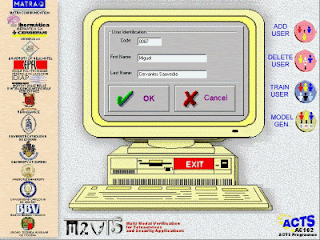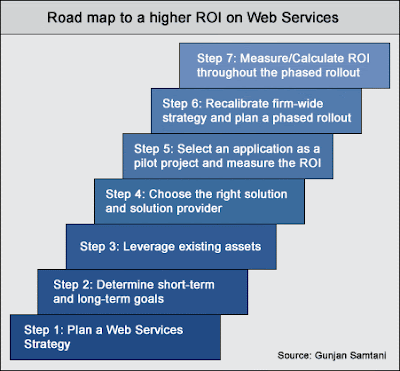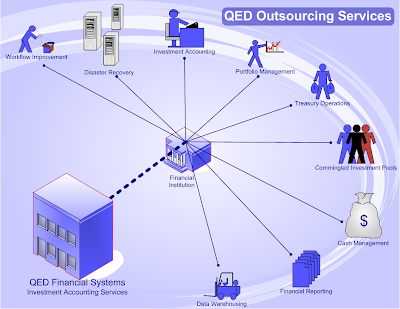 Section 10.1 - Before You Go On…
Section 10.1 - Before You Go On… 1. What are some problems associated with assessing the costs of IT?
One of the main challenges that companies face is to allocate fixed costs among different IT projects, for IT fixed costs includes infrastructure costs, cost of IT services, and IT management cost. For example, the salary of the IT director is fixed, and adding one more application will not change it.
Another complication is that the cost of a system does not end when the system is installed. For example in 2000 reprogramming projects that cost organisations worldwide billions of dollars at the end of the twentieth century.
One of the main challenges that companies face is to allocate fixed costs among different IT projects, for IT fixed costs includes infrastructure costs, cost of IT services, and IT management cost. For example, the salary of the IT director is fixed, and adding one more application will not change it.
Another complication is that the cost of a system does not end when the system is installed. For example in 2000 reprogramming projects that cost organisations worldwide billions of dollars at the end of the twentieth century.
2. What difficulties accompany the intangible benefits from IT?
Intangible benefits of IT include improved customer and partner relations. Thought with the utilization of different IT methods many diverse obscures occur such as benefit analysis. Thus the completion must be thriving, done in time and inside the financial plan to have benefits.
Intangible benefits - http://emlab.berkeley.edu/users/bhhall/itqbryn.pdf
Intangible benefits of IT include improved customer and partner relations. Thought with the utilization of different IT methods many diverse obscures occur such as benefit analysis. Thus the completion must be thriving, done in time and inside the financial plan to have benefits.
Intangible benefits - http://emlab.berkeley.edu/users/bhhall/itqbryn.pdf
3. Define NPV and ROI, and business case approaches.
The (NVP) is the net present value calculations for cost-benefit analyses, using the NVP methods, analyst convert future values of benefits to their preset-value equivalent by “discontinuing” them at the organisations cost of funds.
The (NVP) is the net present value calculations for cost-benefit analyses, using the NVP methods, analyst convert future values of benefits to their preset-value equivalent by “discontinuing” them at the organisations cost of funds.
ROI, or the return on your investment, refers to the percentage rate of revenue generated by an e-mail campaign over the total cost of the campaign, or the percentage gain in revenue. (www.kateycharles.com/glossary.html). It measures the management’s effectiveness in generating profits with the available assets.

Finally the business case approach provides the bridge between the initial plan and its execution. Its purpose is not only to get approval and funding but also to provide the foundation for tactical decision making and technology risk management. It clarifies how the organisation can best use its resources to accomplish its IT strategy it also helps the business to concentrate on justifying the investment.
Section 10.5 - Before You Go On…
Section 10.5 - Before You Go On…
1. What type of companies provide outsourcing service?
Small or medium-size companies with few IT staff and limited budgets are best served by outside contractors. Large companies may also choose this strategy in certain circumstances. They also might use outsourcing to protect their internal networks and to gain access to outside experts.
Small or medium-size companies with few IT staff and limited budgets are best served by outside contractors. Large companies may also choose this strategy in certain circumstances. They also might use outsourcing to protect their internal networks and to gain access to outside experts.

2. Define ASPs and list their advantages to companies using them.
ASPs is the application service provider an agent or a vendor who assembles the software needed by enterprises and packages the software with services such as development, operations, and maintenance.
ASPs is the application service provider an agent or a vendor who assembles the software needed by enterprises and packages the software with services such as development, operations, and maintenance.
The advantages include:
- Save costs
- Reduce software maintenance
- Reduce user training
- Make the company more competitive by reducing time-to-market and enhance the company’s ability to adapt to changing market conditions.
3. List some disadvantages of ASPs.
Some of the disadvantages include;
- ASPs might not offer adequate security protections
- Software might not be a perfect fit for the desired application
- Company must make certain that the speed of the internet connection between the customer and the Asp is adequate to handle the requirements of the application.
Section 10.6 - Before You Go On…
1. List the major steps of selection of a vendor and a software package.
The major steps of selection of a vendor and a software package include:
1. Identify Potential Vendors: when companies can identify potential software application vendors through various sources e.g. software catalogs, web searches etc.
2. Determine the Evaluation Criteria: the most difficult and crucial task in evacuating a vendor and a software package is to select a detailed set of evaluation criteria. This criteria should be set out in a request for proposal (RFP), a document that is sent to potential vendors inviting them to submit a proposal that describes their software package and explains how it would meet the company’s needs.
3. Evaluate Vendors and Packages: the response to an RFP generate massive volumes of information that a company must evaluate. The goal of the evaluation is to determine the gaps between the company’s needs and the capabilities of the vendors and their application packages.
4. Choose the Vendor and Package: once the company has shortened the list of potential suppliers, it can begin negotiations with these vendors to determine how their packages might be modifies to remove any discrepancies with the companies IT needs.
5. Negotiate a Contract: the contract software vendor is very important. It specifies both he price of the software and the type and amount of support that the vendor agrees to provide.
6. Establish a Service Level Agreement: SLA are final agreements the specify how work is to be divided between the company and its vendors.
1. Identify Potential Vendors: when companies can identify potential software application vendors through various sources e.g. software catalogs, web searches etc.
2. Determine the Evaluation Criteria: the most difficult and crucial task in evacuating a vendor and a software package is to select a detailed set of evaluation criteria. This criteria should be set out in a request for proposal (RFP), a document that is sent to potential vendors inviting them to submit a proposal that describes their software package and explains how it would meet the company’s needs.
3. Evaluate Vendors and Packages: the response to an RFP generate massive volumes of information that a company must evaluate. The goal of the evaluation is to determine the gaps between the company’s needs and the capabilities of the vendors and their application packages.
4. Choose the Vendor and Package: once the company has shortened the list of potential suppliers, it can begin negotiations with these vendors to determine how their packages might be modifies to remove any discrepancies with the companies IT needs.
5. Negotiate a Contract: the contract software vendor is very important. It specifies both he price of the software and the type and amount of support that the vendor agrees to provide.
6. Establish a Service Level Agreement: SLA are final agreements the specify how work is to be divided between the company and its vendors.
2. Describe a request for proposal (RFP).
The request for proposal (RFP) is a document that is sent to potential vendors inviting them to submit a proposal that describes their software package and explain how it would meet the company’s needs. The RFP provides the vendors with the formation about the objectives and requirements of the system. Specifically, it describes the environment in which the system will be used, the general criteria that the company will use to evaluate the proposals, and the conditions for submitting proposals. The RFP ma also request a list of current users of the package whom the company may contact. Finally, it can require the vendor to demonstrate the package at the company’s facilities using specifies inputs and data files.
The request for proposal (RFP) is a document that is sent to potential vendors inviting them to submit a proposal that describes their software package and explain how it would meet the company’s needs. The RFP provides the vendors with the formation about the objectives and requirements of the system. Specifically, it describes the environment in which the system will be used, the general criteria that the company will use to evaluate the proposals, and the conditions for submitting proposals. The RFP ma also request a list of current users of the package whom the company may contact. Finally, it can require the vendor to demonstrate the package at the company’s facilities using specifies inputs and data files.
3. Describe SLAs.
Service legal agreements (SLA) are formal agreements regarding the division of work between a company and its vendors. They describe how quality checks will be made and what is to be done in case of disputes. SLA accomplish these goals:
(1) Defining the responsibility of both partners
(2) Providing a framework for designing support services
(3) Allowing the company to retain as much control as possible over its own systems..
SLA include such issues as performance, availability, backup, and recovery, upgrades and hardware and software ownership.
Service legal agreements (SLA) are formal agreements regarding the division of work between a company and its vendors. They describe how quality checks will be made and what is to be done in case of disputes. SLA accomplish these goals:
(1) Defining the responsibility of both partners
(2) Providing a framework for designing support services
(3) Allowing the company to retain as much control as possible over its own systems..
SLA include such issues as performance, availability, backup, and recovery, upgrades and hardware and software ownership.

Excellent read, I just passed this onto a colleague who was doing a little research on that.
ReplyDeletecreate a Wordpress Website for your Real Estate Business
Download Video Player | Windows Media Player | Best Media Player
ReplyDeleteThanks for the always useful information. This is great information to help peoples and nice article written by writer. CnX Player is a powerful & efficient 4K ultra HD enabled video player for Windows 10 PC & Tablet, Android and iOS – iPhone & iPad.
ReplyDeleteDownload Media Player for Windows 10 - Microsoft Store
Download Video Player for Android from Google Play
Download Video Player for iPhone/iPad from Apple App Store